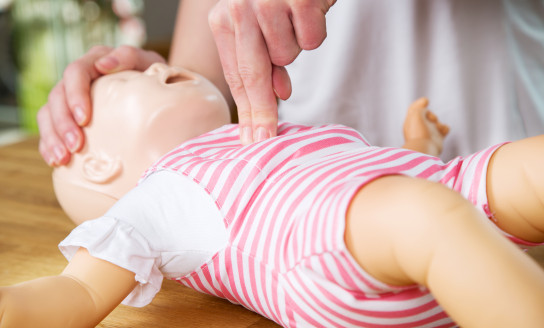When to do CPR
Children and infants who are not breathing normally need CPR. If you aren't sure, it is better to start CPR right away.
Remember 'DR'S ABCD' for the assessment of an unconscious baby or child.
D - Dangers
Check for dangers to you, your child, or bystanders and make the area safe.
R - Response
Check to see if your child is responsive – do they respond when you call their name, or touch their shoulder?
S - Send for help
If your child doesn’t respond to you, ask someone to call 111 immediately.
If you're on your own and a phone is not immediately available, do CPR for about one minute then call for help. If there is a phone available, call 111 on speaker phone while you start CPR.
A - Airway
Open your child’s airway by moving their head into a neutral position and lift the chin. Don’t tilt their head back too far. If you see anything in the mouth, use two fingers to sweep it out.
B - Normal Breathing
Look and feel for movement of the lower chest and upper abdomen (stomach). Listen and feel for air coming out of their mouth or nose.
C - Start CPR
If your child is still not breathing, start CPR. Do 30 compressions for every two breaths.
For a baby (0-12 months) place two fingers of one hand in the center of the chest.
For a child (one to eight years) place the heel of one hand in the center of the chest.
D - Attach Defibrillator
If there is a defibrillator (AED) available, use it and follow the instructions on the machine until medical help arrives.
How to do CPR
How to perform CPR on infants
How to perform CPR on a young child
Online CPR course
Take our online 'CPR for caregivers' course
Our online module for caregivers takes you step-by-step through how to deal with an unconscious baby or child who is unresponsive and not breathing. It includes easy-to-understand videos from St John Ambulance to help you learn what to do.
In-person CPR courses
CPR is an important life skill for everyone – not just parents.
It’s better to learn CPR before you need it. This way, you’ll be ready to help friends or whānau in an emergency. You can learn CPR through courses at St John, Red Cross and other training organisations.
All available courses
Course locations
